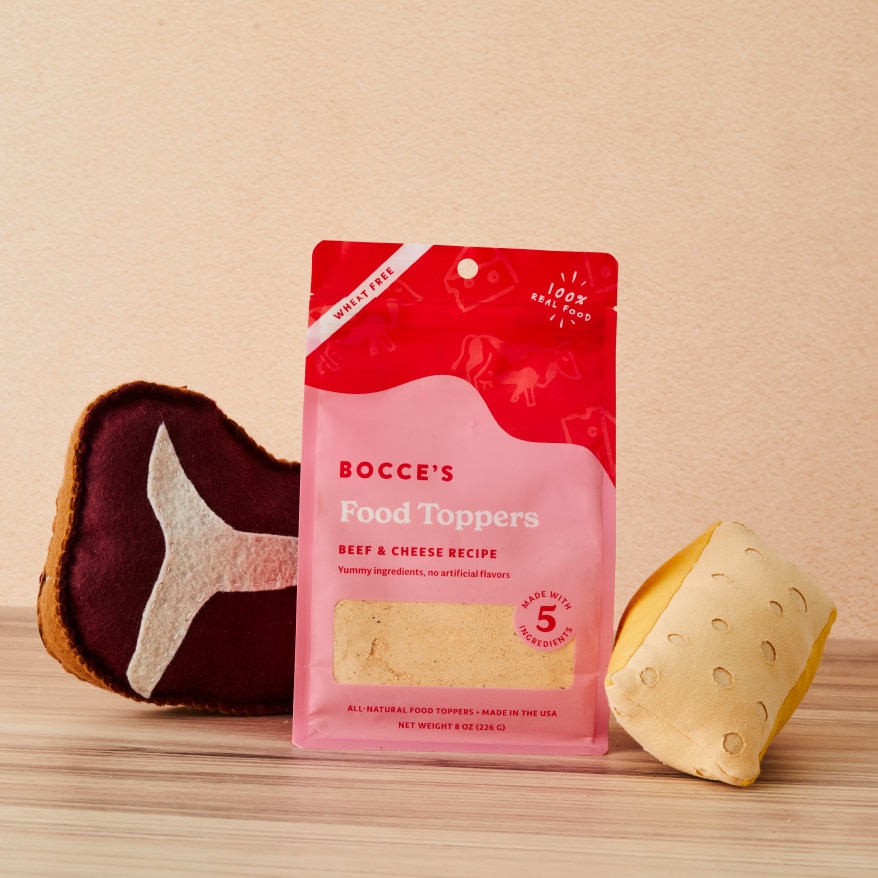Food toppers, the culinary crowns that adorn our dishes, are more than just garnishes; they’re flavor enhancers, texture transformers, and visual masterpieces. From herbs and spices to edible flowers and sauces, these toppers add a symphony of flavors, textures, and colors to every culinary creation.
In this comprehensive guide, we delve into the world of food toppers, exploring their types, benefits, and techniques, while showcasing their creative uses and global influences. Prepare to be inspired as we uncover the secrets of these culinary gems and elevate your cooking to new heights.
Food Toppers
Food toppers, often known as garnishes or toppings, are edible decorations used in culinary arts to enhance the visual appeal and flavor of dishes. They are typically added to the top or surface of food items and can range from simple herbs and spices to intricate edible sculptures.
Food toppers serve several purposes. Primarily, they enhance the aesthetic appeal of dishes, making them more visually appealing and enticing. By adding color, texture, and dimension, toppers can transform ordinary dishes into visually stunning creations. Moreover, food toppers can elevate the flavor of dishes by adding additional layers of taste and aroma.
Herbs and spices, for instance, can introduce new flavor profiles and enhance the overall taste experience.
Common Food Toppers
The world of food toppers is vast and diverse, with countless variations used in different cuisines around the globe. Some of the most common and versatile food toppers include:
- Herbs:Fresh herbs such as parsley, cilantro, basil, and mint are widely used as food toppers due to their vibrant colors, aromatic fragrances, and ability to enhance flavors.
- Spices:Ground spices like paprika, turmeric, and cumin can add vibrant hues and distinctive flavors to dishes. Whole spices, such as star anise and cinnamon sticks, can also be used as decorative toppers.
- Edible flowers:Edible flowers, such as pansies, nasturtiums, and lavender, bring a touch of elegance and natural beauty to dishes. They can add subtle floral notes or peppery flavors.
- Citrus zest:The colorful zest of citrus fruits, such as lemons, oranges, and limes, can add a burst of citrusy flavor and vibrant color to desserts, salads, and main courses.
- Nuts and seeds:Toasted nuts and seeds, such as almonds, pine nuts, and pumpkin seeds, provide a crunchy texture and nutty flavor to salads, soups, and desserts.
- Cheese:Grated or shaved cheese, such as Parmesan, cheddar, or goat cheese, can add a savory touch and enhance the richness of dishes.
Types of Food Toppers
Food toppers are the perfect way to add a touch of flavor, color, and texture to your favorite dishes. They come in a wide variety of types, each with its own unique flavor profile and culinary uses.
Types of Food Toppers
| Topper Type | Description | Examples | Culinary Uses |
|---|---|---|---|
| Herbs | Fresh or dried leaves that add flavor and aroma to dishes | Basil, cilantro, parsley, rosemary | Sprinkled on top of salads, soups, and entrees |
| Spices | Dried or ground seeds, fruits, or roots that add flavor and heat to dishes | Cinnamon, cumin, paprika, turmeric | Used in rubs, marinades, and sauces |
| Edible flowers | Fresh or dried flowers that add a delicate flavor and visual appeal to dishes | Pansies, violets, nasturtiums | Garnished on salads, desserts, and cocktails |
| Seeds | Small, dried seeds that add texture and crunch to dishes | Chia seeds, flax seeds, sesame seeds | Sprinkled on top of salads, yogurt, and oatmeal |
| Sauces | Liquid or semi-liquid toppings that add flavor and moisture to dishes | Salsa, guacamole, sour cream | Served on top of tacos, burritos, and nachos |
Benefits of Using Food Toppers

Incorporating food toppers into culinary creations offers a myriad of advantages that elevate both the taste and aesthetic appeal of dishes. These toppers provide an array of benefits that enhance the overall dining experience.
Enhancing Flavor
Food toppers act as flavor enhancers, adding depth and complexity to dishes. Herbs, spices, and grated citrus zest can introduce vibrant notes, while nuts, seeds, and crispy shallots add savory and textural dimensions. These toppers transform simple meals into culinary masterpieces, captivating taste buds with every bite.
Adding Texture
Toppers bring a symphony of textures to the palate. Crunchy croutons contrast the softness of soups, while toasted coconut flakes add a delightful chewiness to desserts. The interplay of textures creates a multi-sensory experience that engages diners and leaves a lasting impression.
Providing Visual Appeal
Food toppers are not just taste enhancers but also visual delights. Colorful herbs, vibrant fruits, and intricate edible flowers transform ordinary dishes into works of art. They add a pop of color and visual interest, making meals more visually appealing and inviting.
Improving Nutritional Value
Many food toppers offer nutritional benefits. Herbs and spices are rich in antioxidants and anti-inflammatory compounds, while nuts and seeds provide essential fatty acids, protein, and fiber. By incorporating these toppers, cooks can enhance the nutritional value of dishes without compromising on taste or visual appeal.
Techniques for Using Food Toppers

Incorporating food toppers into your culinary creations is an art form, and various techniques can elevate the flavors and presentation of your dishes. Here’s a comprehensive guide to the different methods used to add these culinary enhancements:
Sprinkling
Sprinkling is a straightforward technique that involves evenly distributing food toppers over the surface of your dish. This method is commonly used with grated cheese, herbs, spices, or crumbled bacon. It adds a subtle flavor and textural contrast, enhancing the overall appeal of your culinary masterpieces.
Marinating
Marinating involves submerging food toppers in a flavorful liquid for an extended period, allowing them to absorb the flavors and aromas. This technique is ideal for infusing food toppers with complex flavors and tenderizing them. Marinades can be made with a variety of liquids, such as oil, vinegar, or yogurt, and can include herbs, spices, and other seasonings.
Sautéing, Food toppers
Sautéing is a cooking method that involves pan-frying food toppers in a small amount of oil or butter over medium heat. This technique allows for the development of a golden-brown crust while preserving the texture and flavor of the toppers.
Sautéing is commonly used with vegetables, nuts, and seeds, and can enhance their flavor and aroma.
Baking
Baking is a versatile technique that involves cooking food toppers in an oven. This method can be used to create crispy, crunchy, or chewy textures, depending on the temperature and duration of baking. Baking is ideal for preparing bread crumbs, croutons, and other toppers that require a dry and crispy texture.
Garnishing
Garnishing is the final touch that adds visual appeal and enhances the presentation of your dishes. Food toppers can be used as garnishes to create intricate designs, add pops of color, or provide a contrasting texture. This technique is often used with fresh herbs, edible flowers, or thinly sliced vegetables.
Food Toppers in Different Cuisines
Food toppers play a vital role in enhancing the flavors and presentation of dishes worldwide. Different cuisines incorporate unique toppers that reflect their culinary traditions and regional ingredients.
Italian Cuisine
Italian cuisine is renowned for its use of savory and aromatic food toppers. Parmesan cheese, a hard and nutty cheese, is a classic topping for pasta dishes, adding a salty and umami flavor. Basil, with its fresh and herbaceous notes, is commonly used in salads, pizzas, and pasta sauces.
Oregano, another herb, provides a warm and slightly bitter flavor, often used in tomato-based sauces and grilled meats.
Mexican Cuisine
Mexican cuisine is characterized by its vibrant and spicy flavors. Cilantro, a fresh herb with a citrusy aroma, is a staple topping for tacos, burritos, and salsas. Lime wedges add a sour and refreshing kick to dishes, balancing the heat of chili peppers.
Avocado, a creamy and flavorful fruit, is used as a topping for tacos, salads, and guacamole.
Japanese Cuisine
Japanese cuisine emphasizes delicate flavors and umami. Nori, a type of dried seaweed, is used in sushi rolls and as a topping for soups and salads. Sesame seeds, with their nutty and slightly sweet flavor, are sprinkled on rice dishes, salads, and grilled meats.
Scallions, with their sharp and slightly oniony flavor, add a fresh and aromatic touch to dishes like ramen and stir-fries.
Creative Uses of Food Toppers

Food toppers are not just limited to enhancing the visual appeal of dishes. Creative culinary enthusiasts have discovered innovative ways to use these edible garnishes to elevate the dining experience.
One inventive approach is creating edible centerpieces. By arranging a variety of toppers on a platter or cake stand, chefs can craft eye-catching displays that double as appetizers or desserts. These edible centerpieces not only add a touch of elegance but also provide guests with a unique culinary experience.
Infusing Cocktails
Food toppers can also be used to infuse cocktails with unique flavors and aromas. By muddling or steeping toppers in spirits, mixologists can create bespoke beverages that tantalize the taste buds. Citrus peels, fresh herbs, and edible flowers are popular choices for infusing cocktails, adding a refreshing or aromatic twist.
Experimenting with Flavor Combinations
Another creative use of food toppers is experimenting with different flavor combinations. By pairing unexpected ingredients, chefs can create dishes that surprise and delight diners. For example, sweet and savory toppers can be combined to create a harmonious balance, while contrasting textures can add an element of intrigue.
Question Bank
What are the most common types of food toppers?
Herbs, spices, edible flowers, seeds, and sauces are some of the most commonly used food toppers.
How do food toppers enhance the nutritional value of dishes?
Many food toppers, such as herbs and spices, are rich in vitamins, minerals, and antioxidants, boosting the nutritional content of meals.
Can food toppers be used to create edible centerpieces?
Yes, food toppers can be creatively arranged to form edible centerpieces, adding a touch of elegance and whimsy to special occasions.
